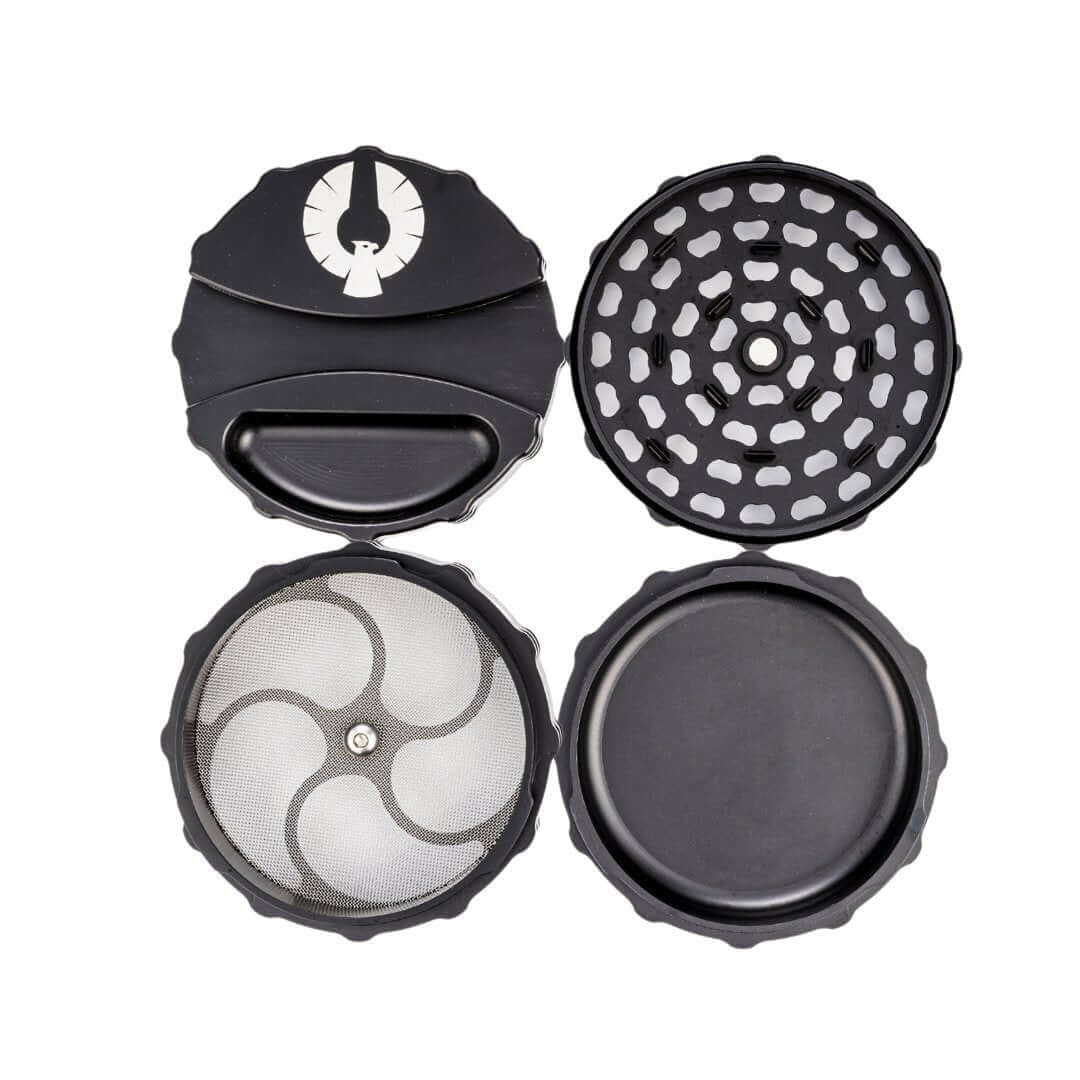Your Cart is Empty
FREE Shipping Over $100
FREE Shipping Over $100
Shop Herb Grinders
Home Cultivation of Cannabis: A Beginner's Guide for 2025
February 16, 2025 5 min read

Growing cannabis at home is a rewarding experience that lets you enjoy the satisfaction of cultivating your own supply. But, like any new endeavor, it comes with its share of challenges, and headaches. This guide is here to help you learn the process, from understanding the legal requirements to choosing the best strains, and creating the right environment for a successful first harvest. If you’re considering diving into indoor cannabis setups or exploring outdoor options, we’ve got you covered.
Setting the Ground Rules for Your Grow
Before planting your first seed, it’s paramount to understand the legal framework in your area. Laws around growing weed at home vary significantly depending on your location. Some regions are much more permissive, while others impose strict bans. For instance, many areas have restrictions on the number of plants allowed, licensing requirements, or rules about keeping your grow operation private and out of the public eye. Researching local regulations in advance makes sure you can cultivate without running into any legal red tape.
In addition to local laws, you need to look at any regulations on equipment or supplies. Some areas may require you to purchase specific seeds or clones from only licensed dispensaries. Understanding these nuances helps you avoid potential penalties and keeps your grow operation compliant.
Choosing the Right Strains
Selecting the right cannabis strain plays an integral part in your cultivation success. You should consider factors such as your local climate, available space, and what you hope to achieve. Strains like Blue Dream, Northern Lights, and White Widow are beginner-friendly options that combine resilience with rewarding yields. These strains are forgiving of common mistakes, making them ideal for first-time growers.
Climate is one of the biggest factors when choosing a strain. Outdoor growers in colder regions should look for indica-dominant strains that can handle lower temperatures. In warmer areas, sativa strains thrive under the intense sun. For indoor growers, the compact size and faster flowering times of many hybrid strains are better suited to limited space and controlled environments.
The purpose of your cannabis cultivation also matters. If you’re growing for medicinal use, prioritize strains with specific cannabinoid profiles, such as high-CBD options for anxiety or pain relief. For recreational growers, consider strains known for their potency and unique terpene profiles, which contribute to flavor and aroma.
Setting Up Your Growing Environment
The setup you choose will largely depend on whether you opt for indoor or outdoor cultivation. Indoor cannabis setups give you complete control over conditions such as light, temperature, and humidity. You’ll need equipment like LED grow lights, fans for ventilation, and containers with proper drainage. Soil is often the easiest growing medium for beginners, though hydroponic systems can yield faster growth with a bit more effort.
One of the advantages of home-grown weed is the ability to create a stable environment year-round. By investing in timers and humidity controllers, you can automate much of the process, reducing the risk of human error. Indoor cultivation also offers greater discretion, as your plants remain hidden from view and are less susceptible to pests and weather extremes. Many indoor growers prefer to use grow tents for their discreet nature and all-inclusiveness.
Outdoor cannabis cultivation takes advantage of natural sunlight, making it a more budget-friendly and eco-conscious option. Make sure your chosen site has ample sunlight, well-draining soil, and provides solid protection from any pests or curious animals. There is nothing worse than waking up to check on your beautiful flowers and realizing a deer has made a snack out of them! We recommend preparing the ground with organic compost to boost your plants’ health and productivity in the beginning stages. Keep an eye on the weather and be ready to shield your plants during extreme conditions.
Growing and Keeping Healthy Plants
Maintaining consistency is fundamental to cultivating a strong, healthy cannabis crop. Regularly monitoring factors like pH levels, nutrient intake, and watering schedules is important. Cannabis plants flourish when their pH levels are kept within specific ranges: 6.0 to 7.0 for soil and 5.5 to 6.5 for hydroponics. Overwatering is another common mistake, so it’s important to let the soil dry out between waterings.
Providing the right nutrients at each growth stage supports optimal development. Nitrogen, phosphorus, and potassium are vital throughout the vegetative and flowering phases. During the vegetative stage, nitrogen promotes leafy growth, while phosphorus and potassium become more necessary during flowering to encourage bud development.
Pruning and training techniques, such as topping or low-stress training (LST), can encourage light exposure and improve yields. Topping involves removing the top growth of the plant to promote lateral branching, while LST uses gentle bending to shape the plant for better light distribution. Both methods can significantly increase your overall harvest.
Regularly check for pests like aphids or spider mites and address infestations promptly using organic methods such as neem oil or introducing beneficial insects. Inspecting your plants daily allows you to catch potential problems early, minimizing damage and assuring a healthy crop.
Harvesting and Curing Your Cannabis
One of the most exciting parts of cannabis cultivation is your harvest. Timing is paramount to maximize the potency and flavor. Trichomes, the tiny crystals covering your buds, offer visual cues. When they transition from clear to cloudy or amber, it’s time to harvest. Using a magnifying glass or jeweler’s loupe can help you closely inspect trichome development.
Once harvested, buds should be dried in a dark, well-ventilated space for about a week. Proper curing in airtight jars further enhances their aroma and potency. Open the jars daily during the first week to release excess moisture and prevent mold growth. The curing process is indispensable for improving the overall quality of your cannabis, making it smoother to smoke and more flavorful.
If stored correctly, cured cannabis will retain its potency and flavor for months. Keep your jars in a cool, dark place, and consider adding humidity control packs to maintain an optimal environment.
Enhancing the Experience with Phoenician Grinders
Once all your hard work and dedication have paid off, it's time to enjoy that beautiful bud! At Phoenician Grinders, we’re all about helping you get the most out of your smoking experience. Our patented grinders are built with precision and innovation, offering you features that make grinding effortless.
Our optimum consistency of the ground herbs is controlled more efficiently through the inverse trapezoid shape of the fall-through section. This shape not only adds to the grinder's visual appeal it also works in conjunction with the teeth design and results in the fewest lid rotations necessary to completely grind the herbs. With nearly a decade of experience, we’ve perfected the art of crafting grinders that are as stylish as they are functional. Elevate your cannabis game with Phoenician Grinders—because every smoker deserves the best. Try one today and see the difference!
A High Note to End On
Growing marijuana at home in 2025 offers a fulfilling and educational journey. With the right preparation, strain selection, and care, your marijuana cultivation efforts can yield a bountiful and high-quality harvest. Whether you choose an indoor setup for precision or embrace outdoor growing for its natural simplicity, the rewards are well worth the effort. By staying patient, adaptable, and attentive to your plant’s needs, you’ll not only cultivate cannabis but also gain a deeper appreciation for the process. Enjoy the journey, and happy growing!
Also in The Grind

Understanding Cannabis Terpenes: Enhancing Your Experience
November 02, 2025 5 min read
Terpenes play a crucial role in the flavor and effects of cannabis, yet they’re often overlooked. This article breaks down what terpenes are, how they work with cannabinoids, and how to use them to tailor your cannabis experience. Discover the science behind the smells and effects of your favorite strains.

The Endocannabinoid System: How Cannabis Interacts with Our Bodies
October 19, 2025 2 min read
Continue Reading
The Ultimate Grinder Guide: How to Choose the Right Grinder for You
October 10, 2025 3 min read
Continue Reading







